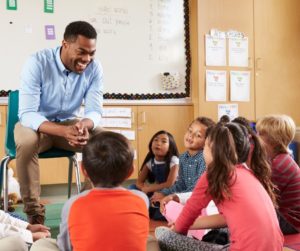PBS. Pause, breathe, smile. Teaching our kids mindfulness techniques in their daily lives helps them to grow up mentally healthier and stronger.
Children face many pressures and demands in our modern culture. They need guidance and help learning how to deal with their emotions and thoughts. In this resource we’ll look at what is mindfulness for kids, what the benefits are, how you can teach it to your children as well as a bunch of mindfulness activities and resources for kids to use.
But first, this fun video from a school in New Zealand where children explain what mindfulness is in their own words and how it benefits them.
What is mindfulness for children?
Mindfulness for children is all about taking the disciplines and ethos of mindfulness and packaging it in a way that kids can understand and make use of. It gives them the tools to cope with things like stress and anxiety, wavering emotions, and challenges that over time shape their mental fortitude.
The incredible advantage of teaching mindfulness to children is that their brains and bodies are still developing so they absorb these practices so much quicker and easier than adults and can build strong mental health patterns from a young age, setting them up for the rest of their lives.
Why mindfulness for kids? What are the benefits?
Most adults didn’t grow up with the concept of mindfulness and the idea may seem a little “out there,” whereas in practice mindfulness often feels very normal, easy to do and is clearly good for us. The real question is why not get your kids started with mindfulness today?
There are many benefits for children practicing mindfulness. It’s proven to reduce their levels of anxiety and stress, improve their mood, it helps them make better decisions, improves their emotional regulation skills, their self esteem, academic performance, health and body image, improves social and communication skills, it builds emotional and psychological resilience, it helps them sleep better and mindfulness can help bring peace and calm to the classroom.
Teaching mindfulness to children
Teaching our children how to be aware in the present moment, in a non-judgemental way, is a useful skill they can use for their entire lives. Don’t make mindfulness seem like something only to be used in times of trouble – present it as a tool to be used in a variety of situations.
There are a number of different mindful practices and activities you can teach your children, some of which we’ve listed below. It’s advisable to try teach mindfulness to your child for the first time, at a time of the day when they are calm and open to learning and you have the patience and time to teach them. An hour before bedtime is generally a bad idea in most households!
Mindfulness activities for kids
There are a number of different ways you can incorporate mindfulness into your child’s daily life including:
(Click the links for more information)
Mindfulness at school
Mindfulness can be incredibly useful to bring peace and calm to the classroom, helping students to calm themselves as well as enabling them to learn better.
It’s designed to teach them self-awareness and empathy, techniques to calm and focus the mind as well as mindful communication skills.
Studies have shown that mindfulness in schools helps improve a child’s attention, emotional regulation, social skills and behaviour, gives them a greater level of compassion and lowers their levels of anxiety and stress.
There are benefits for educators as well including reduced stress and burnout, greater job efficacy, increased ability to provide emotional support in the classroom and better organization.
Mindfulness resources
It’s never too early to introduce your kids to age appropriate mindfulness activities. Click the links below or throughout this article to find resources that can help you bring mindfulness into your family or school environment.
Information about mindfulness for Kids
Mindfulness Activities for Kids
Mindfulness Professionals for Kids, Families & Schools



